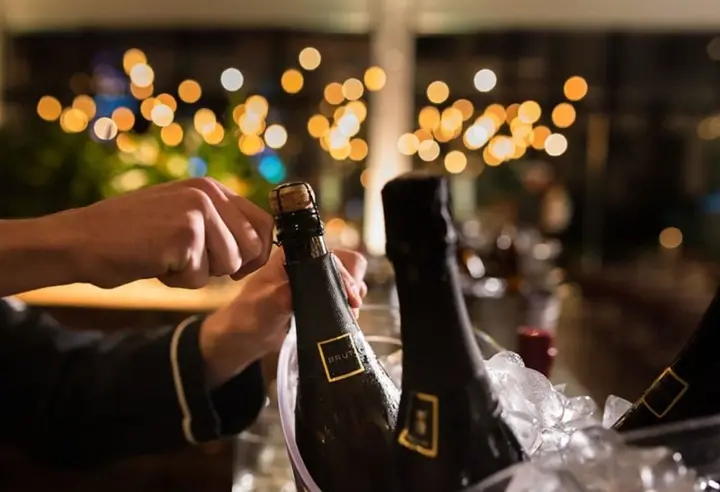Champagne is a delightful and celebratory drink that many people enjoy on special occasions or even just as a treat. However, once a bottle of champagne is opened, it can quickly lose its fizz and flavor if not stored properly. Knowing how to store champagne after opening can ensure that you can enjoy the remaining bubbly at its best quality. In this article, we will explore various methods and tips to keep your champagne fresh, sparkling, and enjoyable for as long as possible.
Understanding Champagne
What is Champagne?
Champagne is a type of sparkling wine that comes from the Champagne region of France. It is made using specific grape varieties, primarily Chardonnay, Pinot Noir, and Pinot Meunier. The unique climate and soil of the Champagne region contribute to the distinct flavor profile of the wine. Champagne undergoes a second fermentation process in the bottle, which creates its characteristic bubbles.
The Importance of Bubbles
The effervescence in champagne is one of its most appealing qualities. The bubbles enhance the flavor and create a lively sensation on the palate. Preserving these bubbles is crucial to maintaining the wine’s character. When a bottle of champagne is opened, the carbonation begins to escape, leading to flat and less enjoyable wine over time.
Immediate Actions After Opening
Using a Champagne Stopper
One of the most effective ways to preserve an opened bottle of champagne is to use a champagne stopper. A champagne stopper is specifically designed to fit securely over the mouth of the bottle and create an airtight seal. This helps to retain the carbonation and prevent the champagne from going flat.
Select a Good Quality Stopper: Not all champagne stoppers are created equal. Choose a stopper made of high-quality materials that provide a tight seal.
Seal the Bottle Immediately: After pouring the desired amount of champagne, quickly place the stopper on the bottle to minimize the loss of carbonation.
Store Upright: Store the bottle upright in the refrigerator to reduce the surface area exposed to air.
Re-corking the Bottle
If you do not have a champagne stopper, re-corking the bottle is another option. However, this method is less effective in retaining the carbonation.
Use the Original Cork: If the cork is still intact and not damaged, you can reinsert it into the bottle.
Wrap the Cork: Wrap the cork in a small piece of wax paper to make it easier to reinsert and create a better seal.
Insert the Cork: Push the cork back into the bottle as far as it will go.
Store Upright: Place the bottle upright in the refrigerator.
Plastic Wrap and Rubber Band
In a pinch, you can use plastic wrap and a rubber band to seal an opened bottle of champagne.
Cover the Mouth: Place a piece of plastic wrap over the mouth of the bottle.
Secure with Rubber Band: Wrap a rubber band around the neck of the bottle to hold the plastic wrap in place.
Store Upright: Store the bottle upright in the refrigerator.
See Also: How Long Does Unopened Champagne Last in the Fridge?
Proper Storage Conditions
Refrigeration
Refrigeration is crucial for storing opened champagne. Cold temperatures slow down the process of carbonation loss and help maintain the wine’s freshness.
Temperature: Store the champagne at a temperature between 38°F to 45°F (3°C to 7°C). Avoid freezing the champagne as this can damage the wine and alter its flavor.
Humidity: Maintain a humidity level of around 70% to prevent the cork from drying out and losing its seal.
Dark Environment: Keep the champagne in a dark place, as light can degrade the wine and affect its quality.
Avoid Shaking
Minimize shaking or moving the bottle after it has been opened. Shaking can cause the carbonation to escape more quickly and lead to flat champagne. Handle the bottle gently and store it in a stable position in the refrigerator.
Short-Term vs. Long-Term Storage
Short-Term Storage
For short-term storage, using a champagne stopper and refrigeration is usually sufficient to keep the champagne fresh for a few days. The key is to minimize exposure to air and maintain a consistent temperature.
Long-Term Storage
For long-term storage, it is challenging to maintain the same level of carbonation and freshness. If you do need to store an opened bottle for an extended period, consider the following tips:
Vacuum Sealer: Use a vacuum sealer designed for wine bottles to remove excess air from the bottle.
Carbonation Preservation: Some devices can inject carbon dioxide back into the bottle to maintain carbonation.
Frequent Checks: Periodically check the champagne to ensure it has not gone flat or developed off-flavors.
Creative Uses for Leftover Champagne
Cooking
Leftover champagne can be used in various culinary applications. Its acidity and flavor can enhance many dishes.
Sauces: Use champagne to make elegant sauces for fish, chicken, or seafood.
Risotto: Replace part of the stock in a risotto recipe with champagne for a luxurious twist.
Desserts: Incorporate champagne into desserts like sorbets, cakes, or fruit compotes.
Cocktails
If the champagne has lost some of its fizz but is still drinkable, use it to make cocktails.
Mimosa: Mix champagne with orange juice for a classic mimosa.
French 75: Combine champagne with gin, lemon juice, and simple syrup for a refreshing French 75.
Champagne Sangria: Make a sangria with champagne, fruit, and a splash of liqueur.
Conclusion
Storing champagne after opening requires some attention and care to preserve its effervescence and flavor. Using a champagne stopper, re-corking, or even plastic wrap can help maintain the wine’s quality for a short period. Refrigeration is essential to slow down the loss of carbonation. For long-term storage, more advanced methods like vacuum sealers or carbonation preservation devices can be considered. Additionally, leftover champagne can be creatively repurposed in cooking or cocktails.
By following these guidelines, you can ensure that your opened bottle of champagne remains as enjoyable as possible. Cheers to making the most out of every bottle!


